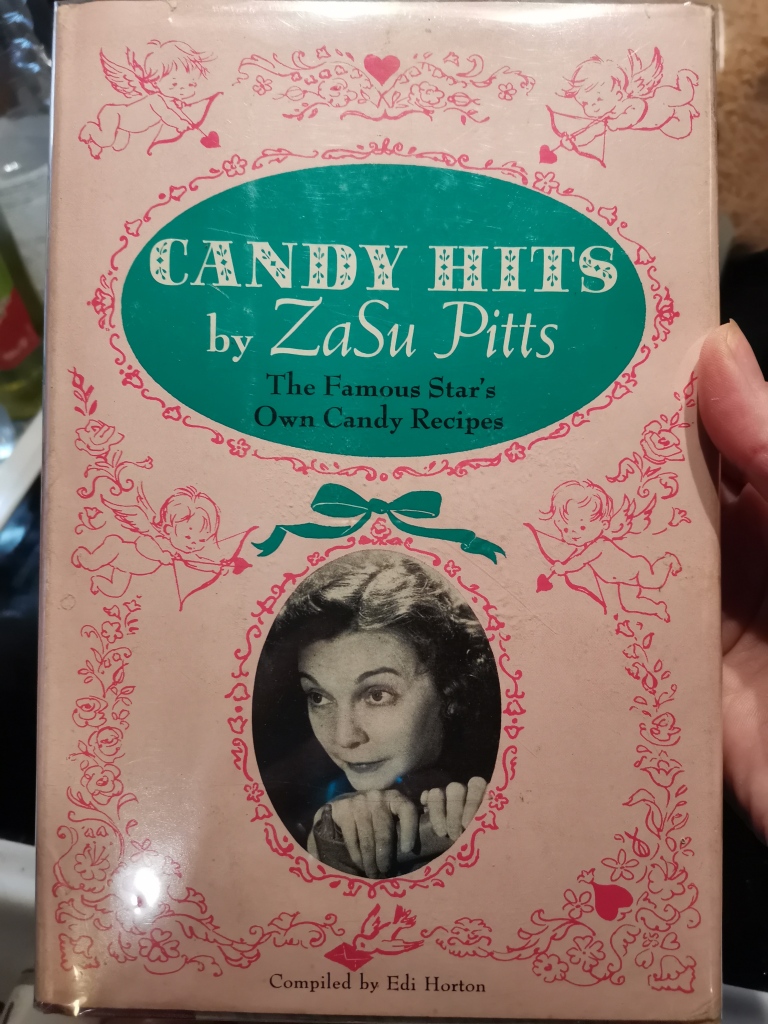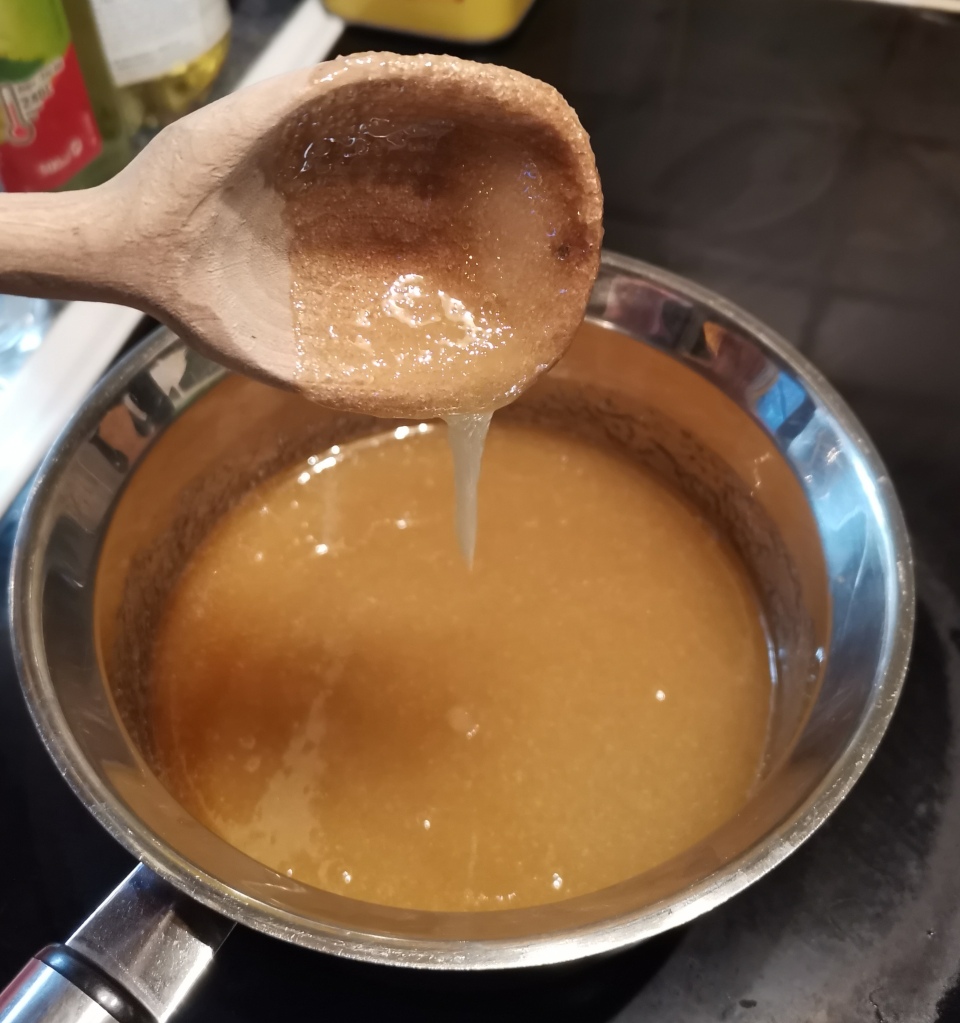Mrs. Hindle has many interests in life – handicrafts, old cook books, silent films, and referring to herself in the third person. It’s a rare treat when two of those interests meet.
ZaSu Pitts (1894-1963) made her film debut opposite Mary Pickford in A Little Princess in 1917 and a reviewer described her as “a frightened little marmoset”. She had the sort of face that lent itself to supporting roles which means after a solid career in the silents (including a part in the magnificent Greed of 1924) she effortlessly bridged the sound gap and went on to do film, radio, Broadway and television.

Her book on candy was published posthumously in 1963. There are several interesting recipes in it, but because of Christmas and a lackluster attempt to isolate a bit I was constrained to whatever ingredients I happened to have at home.

The light corn syrup posed a problem. Not an ingredient commonly used here, it was certainly not something I just happened to have lying around. A bit of research suggested that corn syrup is used in candy making because it doesn’t crystallize and this gives a smooth finish. I have no idea if other syrups crystallize, but luckily I had a bit of glucose syrup left. It turned out not to be enough so I had to add a little maple syrup as well. Not sure if that affected the taste in the end.

Mix your dry ingredients and heat the sugar and syrup until it comes to a boil.

When the mixture boils, add peanut butter and vanilla. Vanilla is tricky. ZaSu doesn’t specify what she uses – extract or an actual pod? And if it’s extract, I have no idea how strong extract 60 years ago was compared to now. My solution was to just pour in a splash that seemed adequate. It seemed to work.

Pat the mixture into a greased dish and set to cool. Work fast because this stuff gets sticky very rapidly. Actually everything is rapid here – apart from the cooling I doubt this recipe took more than 15-20 minutes to make.
Normally I tend to prefer older books – 100 years is my rather arbitrary cut-off point – but I will make equally arbitrary exceptions and when I found out about this book a few years ago I had to include it in my collection. I found a copy in Massachusetts, through the wonders of the internet. I enjoy buying second-hand books from all over because often I’ll find something stuck between the book when it arrives.

This one was no different – wouldn’t you just love browsing Whately Book Centre’s shelves? Alas, it seems they have closed doors business last March. Not that I was likely to ever visit Massachusetts. I hope the proprietors got a kick out of sending this book all the way to Finland.
When your dish has cooked a bit, cut it into suitable pieces. Mine weren’t big, but Hindle Child #1 said they need to be smaller so she can pop a whole one on her mouth.

I was pleasantly surprised by how easily the squares came out of the dish. The treats were fluffy and sweet, but not sickly sweet, with a pleasant taste of peanut. Hindle Child #2 announced that she intended to have a mandarin and a peanut bar for breakfast.



